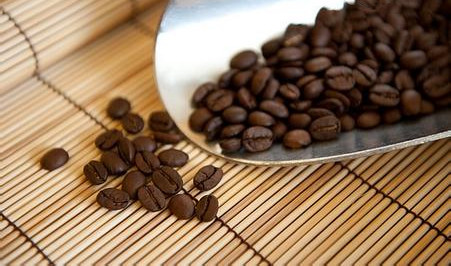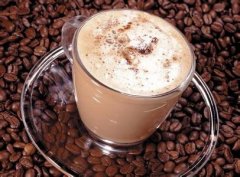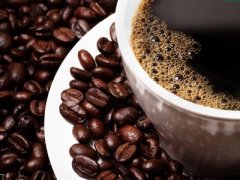Coffee Culture in the Cafe in the Office

Xavier Unkovic started his day at the office with two cups of green tea and a cup of coffee at noon. As global president of Mars Drinks, he found that most office workers share his complex drinking habits in the workplace. Some people like coffee, some people like tea, and some people have a soft spot for hot chocolate, which is closely related to age and gender. Even coffee tastes vary, and Xavier Onkwijk believes that young people in their mid-20s have little interest in black coffee without sugar, while those over 25 start to try stronger black coffee. So even if Starbucks enters the office building, it may not be able to meet the requirements of all employees of a company.
Mars, one of the world's largest food producers, has a reputation not only for chewing gum, candy, chocolate and pet care, but also for seeing diversity in workplace beverage demand. Mars introduced its innovative single-cup filter system in 1984-a system that quickly addressed the needs of people with different flavors of hot drinks. The original idea came from a Mars family member and co-founder John Mars. At that time, Mars sold chocolate and candy in Britain, and one of the most important channels was vending machines. John Mars discovered that people often buy chocolate with a drink, which led him to the idea of selling drinks through vending machines. This idea evolved into what is now Mars Beverage System.
Although Mars drinks has long been known to office staff in the United States, Britain, Japan and other places, its global annual sales have exceeded 1 billion US dollars, and the beverage system covers more than 100,000 office locations around the world, but few Chinese have known about it before. This brand, which has just officially entered the Chinese market on March 11, 2014, is ready to start occupying the pantries of major company offices. Faced with this emerging market, Mars Beverage President Xavier Onkvik appeared confident at the launch ceremony: "China's high-end office hot drinks market is growing at an average annual rate of more than 20%, and the market size is expected to exceed RMB 5 billion in 2018, so the Chinese market will become one of our development priorities."
Pantry fight
What makes Mars drinks special is that it's almost exclusively found in offices. Focusing on the B2B channel also places higher demands on Mars Beverages â € "it has to focus on both the company's needs and the consumer's. So Xavier Onkwijk's problem is not only to satisfy all tastes of drinkers, but also to find ways for companies to pay for such a hot drink system. After all, this is a free service for employees, and the real buyers of this system are enterprises.
How do you make a company attractive to employees? A good salary, a long annual leave, a training program, and a cool office are all possible bonus options. Mars drinks believes employees may also be attracted to a hot drink within reach. This is the logic of Mars drinks thinking and sales strategy. It wants to reach an understanding with its customers that people are the most valuable asset to any business.
The rise of the Internet in the 1990s changed everything in the office. The first is to break up the cubicle, and more interactive and free office space has become more popular, which provides conditions for more smooth and efficient communication between employees. "When employees get together, they need to go for drinks, which is common. Drinks will be a tool for better collaboration among employees." Xavier Onkvik told reporters. Therefore, office culture is also the research scope of Mars Beverage, which has a long-term cooperation with Herman Miller, an American furniture and interior design company, to explore the future development trend of the office. As companies shrink offices and desks to cut costs, they are creating more collaborative and interconnected space for employees. According to Xavier Unkwijk, an idea may be born in a small chat in an office pantry, where the environment, equipment, and even the taste of a drink have a significant impact on productivity.
The big challenge for Mars drinks is how to lure former Starbucks goers back to the office for drinks. According to a survey conducted by a consulting agency in Europe and America, 22% of employees spend an average of 14 minutes a day shopping for drinks. Xavier Onkwijk calculated that if an employee spends nearly 20 minutes a day out buying coffee, he or she will spend more than ten hours a year buying coffee. For a large company with around 3000 employees, there will be a huge loss of productivity each year. "I'm either at Starbucks or on my way to Starbucks." This catchphrase sums up the rapid penetration of coffee culture in China. A look at Starbucks on the ground floor of office buildings shows how much Chinese office workers rely on them for coffee these days. Of course, some people have moved their offices directly into Starbucks, where they discuss work and work on computers. Even if the surrounding conversation is accompanied by the noise of coffee machines, it is still regarded as an ideal office environment. Xavier Onkwijk realized that his biggest competitors were retailers like Starbucks, Costa, and Pacific Coffee rather than equipment suppliers who supplied the company with coffee machines.
How do you convince employees to go back to the office and use Mars 'drinks system? In addition to being a free service, they also get a variety of flavors other than coffee. For companies, it keeps employees in the office and improves productivity. For Bobby Chacko, Mars 'global chief marketing officer, it's a win-win situation: "We've even created a favorable situation for the coffee industry as a whole, and other retailers have to find ways to develop more flavors so that people can drink different flavors at work." So everybody benefits from the big picture."
Coffee retailers are certainly not giving up on the vast market for corporate coffee services. Pacific, Starbucks and Costa have launched their own capsule coffee machines in the market one after another, targeting a wide range of business owners. Pacific Coffee's reliance on B2B business is particularly prominent, as it set up a corporate coffee affairs department as early as 1995 and was the first to launch its own capsule coffee machine in 2011. This coffee powder packed into capsules ground out of coffee, both in terms of quality and price are between freshly ground coffee and instant coffee.
But mars drinks has the advantage of offering hundreds of flavors to a company's employees at once. "There's no single serve company that can serve coffee, tea and chocolate like we do." Xavier Onkvik analyzes the current competitive landscape in this way. Mars drinks, which includes its own brands such as Attica ground coffee, Beuys raw leaf tea and Dove hot chocolate, currently has 18 product lines launched in China, which can be combined into hundreds of flavors. Coffee alone has four flavors with different roasting degrees and tastes, and milk and tea can make more hot drinks.
The secret in the cup.
All thanks to Mars Drinks 'patented technology-the single-cup filtered hot drink system. Each beverage pack is sealed in a closed light and vacuum environment and is provided with a layer of filter. When they are placed into the hot beverage machine, the unique sealing process allows each drink to be filtered directly into the cup through its own packaging. It doesn't mix different drinks like a regular machine does, for example, and chocolate residue can get into the next cup of coffee.
The cleverness of this is that companies must buy beverage packs to match the machines they buy. Xavier Unkwijk explains it as a "razor mode":"Men's razors aren't expensive, and changing blades is where the bigger profits come in." Mars drinks even gives free hot drinks machines to some big businesses. These large businesses often require Mars to provide decades of hot drinks, and with a large number of employees, the consumption of beverage packages is very high.
The machine can brew a hot drink every 40 seconds, recycle 24 beverage packs at a time, and serve an average of about 50 to 70 people per machine, so it needs to be set up on different floors and in different areas of the office. The height of the machine is about 432 mm, which is the "optimal height" designed through repeated experiments. "This height can accommodate almost all office pantries and their equipped cabinet facilities." Bobby Chaco told reporters. Inspiration comes from a variety of sources: on the one hand, how office employees use the machine and understand their experience; on the other hand, observing their favorite tastes and doing a series of taste tests; and on the third, from executives to understand their needs. Bobby Chaco believes that administrative support staff are often overlooked when doing product research: "They take care of what the office staff eat and drink, and our products provide convenience for employees and make them more efficient, instead of having to have different drinks for different machines." Our machines can do everything."
Entering the Chinese market, Mars drinks is also exploring Chinese taste preferences. Based on the feedback collected so far, Dove's hot chocolate is the most popular flavor in China, which is consistent with the global market. In mature markets such as the U.S. and Japan, Mars Beverage's marketing division has developed more detailed consumer insights and analysis. Matcha, a popular flavor in Japan, was introduced to the local market by Mars drinks, while black tea became the mainstay of sales in London. For coffee-loving Americans, East Coast and West Coast tastes even tend to differ. People on the east coast of the United States prefer milder coffee, while people on the west coast prefer dark roast coffee. "We will take these factors into account when developing beverages and make different formulas." Bobby Chaco told reporters,"As for the Chinese market, we will observe what is consistent with the international market and what is special." And look at the retail market and see what new flavors are out there."
The latest piece of good news for Xavier Onkwijk is Mars drinks as a hot drink sponsor of Boao Forum for Asia 2014. As recently as last year, the list of sponsors was Starbucks. Perhaps the organizers of the Boao Forum for Asia seem to find that a Starbucks with only three counters is not a pleasant experience for thousands of conference participants-the break may be only 20 minutes, but people have to wait a long time to get a cup of coffee. Mars drinks systems in conference rooms, lounges and media centers seem to alleviate this situation. "It's not that we sell our products to Boao, it's that it actively chooses us." It found that our drink system for different flavors can meet the needs of different people for different flavors." Hu Kaiping, general manager of Mars Beverage China, told reporters.
Xavier Onkvik is so bullish on the Chinese market that he even thinks China could become Mars drinks 'second-largest market in the world by 2020, even if the brand has just landed in China. When he first came to China five years ago, he found that people were still used to drinking instant coffee, but now coffee shops are everywhere. In addition to the evolution of coffee culture, he found that the company's needs also developed, and began to frequently discuss the importance of talent and productivity. "China is developing very fast. Shanghai five years ago can't be compared with what it is now. If you leave for a year, you may not even know China." Xavier Onkvik said.
Important Notice :
前街咖啡 FrontStreet Coffee has moved to new addredd:
FrontStreet Coffee Address: 315,Donghua East Road,GuangZhou
Tel:020 38364473
- Prev

Classic Coffee Directory Argentine History and Cultural Legends
Buenos Aires, the capital of Argentina, is said to be a city with more cafes than Paris. Buenos Aires currently has 3250 cafés, which means there is one café for every 1000 people in the city. Argentine media wrote that coffee shops are a load of daily life and historical heritage. They can be used for people to call friends, talk loudly, or be used for isolation.
- Next

The culture of drinking coffee the aroma of coffee in the old days
Ink-dyed lamp roll, think about the stubbornness when you didn't know it. Found that at that time will never think about decades later, when a child really grows into a youth, or relatives, or friends, or himself, how many tears, how much persistence, how much courage, how much hesitation. At that time, the sky blue was the ocean in the palm of the hand, and the eyes could only reflect the sky. Pour your dreams into the river
Related
- How did the Salvadoran coffee industry develop in Central America?
- What exactly does the golden cup extraction of coffee mean?
- The Origin of Coffee flower
- [2023 Starbucks World Earth Day] there are more meaningful things besides free Starbucks coffee!
- What kind of coffee is there in Spain? 9 Flavors of Spanish Coffee
- Aromatic African coffee| Kenya's coffee culture and historical production area
- Liberica Coffee Bean knowledge: the characteristics of Liberian Coffee beans of the three original species of Coffee beans
- The origin and formula of Spanish latte introduces the taste characteristics of Bombon coffee in Valencia, Spain.
- How to adjust the solution of over-extracted coffee
- What is the tasting period of coffee beans? What is the period of coffee and beans? How should coffee wake up and raise beans?

